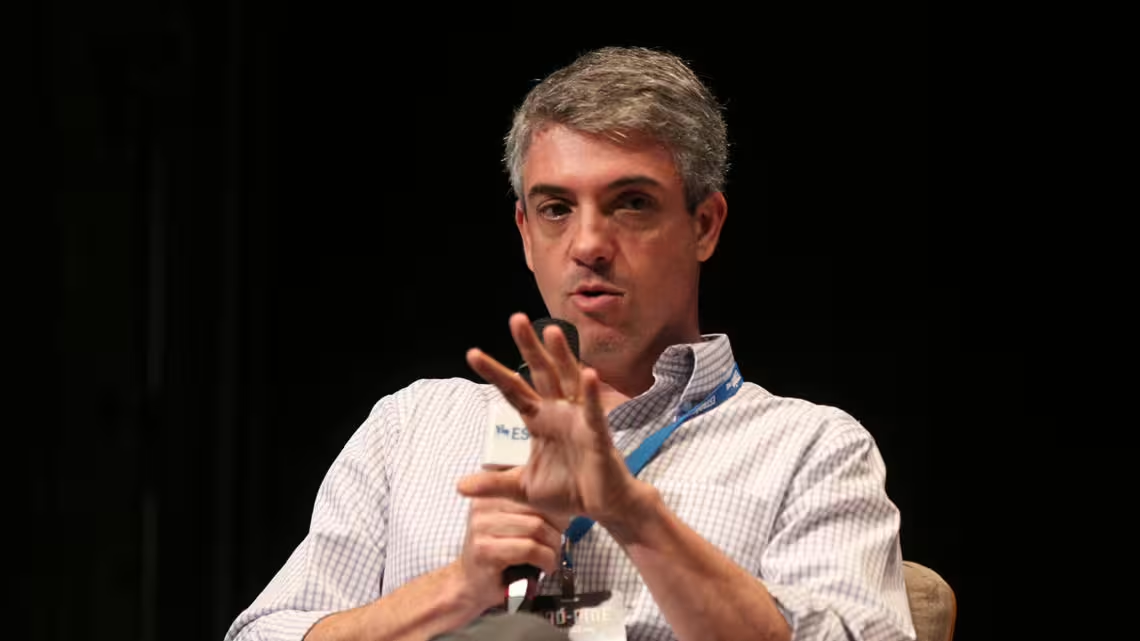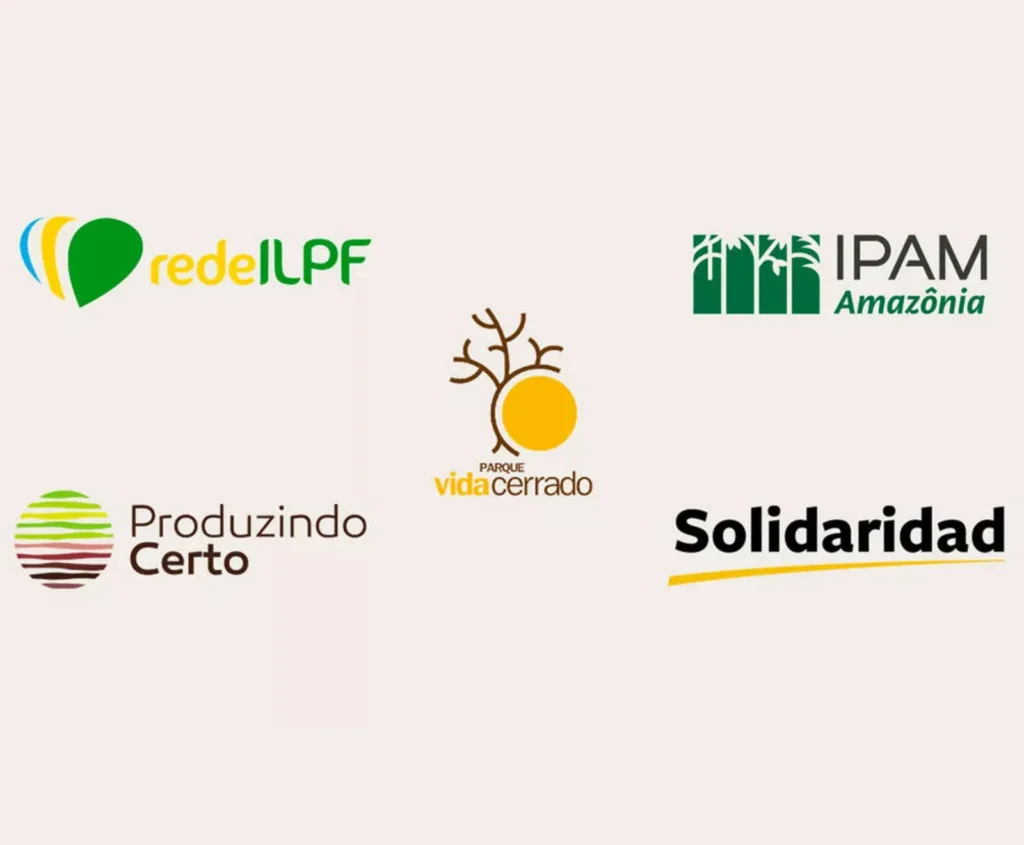Authors
The Soft Commodities Forum
Leia em português – Entrevista com Ricardo Mastroti: Diretor Executivo do Conselho Empresarial Brasileiro para o Desenvolvimento Sustentável (CEBDS)
In this interview, Ricardo Mastroti, Executive Director of The Brazilian Business Council for Sustainable Development (CEBDS), discusses how government policies can effectively support the integration of nature-based solutions into broader climate strategies in key Brazilian biomes such as the Amazon and Cerrado. With over 20 years of experience leading ESG divisions within national and multinational companies, Ricardo also explains why policy and finance levers are key to scale up initiatives such as the Farmer First Clusters to further Brazil’s journey to a nature-positive economy.
What is CEBDS’ perspective on the trajectory toward COP30, particularly regarding the organization’s efforts to position Brazil as a leader in transitioning to a green economy?
CEBDS’ vision is for Brazil to lead the transition toward a just, carbon-neutral, equitable, and nature-positive global economy. Brazil recently unveiled its Federal Government’s Ecological Transformation Plan, to which CEBDS has actively contributed to and which signals Brazil’s intentions to shape a green economy. To deliver the plan, attract external capital and boost Brazil’s transition, there is a need to ensure an improved business environment which can support economic stability, develop effective incentive structures and accompany associated public policies.
Since 2016, CEBDS has been promoting the need to establish a regulatory framework for Brazil’s carbon market, and has since been providing technical assistance to the Federal Government to develop its National Bioeconomy Strategy.
By COP30, the organization aims to support corporates and the Brazilian government to pursue their respective climate commitments, demonstrating that Brazil’s Paris Agreement objective to achieve climate neutrality by 2050 is possible.
How can government policies effectively support the integration of nature-based solutions into broader climate strategies, especially in key Brazilian biomes like the Amazon and the Cerrado?
Brazil’s six biomes represent 15-20% of the planet’s known biodiversity. The country is therefore well positioned to assume a leading role in offering global nature-based solutions (NbS) and natural climate solutions (NCS). Public policies that successfully tackle deforestation and value environmental assets are crucial to halting and reversing the destruction of carbon- and biodiversity abundant biomes like the Amazon and Cerrado.
Launched at the end of 2023, Brazil’s Ecological Transformation Plan provides the guidance and conditions to mitigate the risks of macroeconomic instability which could jeopardize the country’s environmental and social transition. It does so by creating the incentive structures for a carbon-neutral economy to emerge and by strengthening the supply chains capable of economically valuing the wealth of Brazilian ecosystems and the knowledge of its traditional people. Thanks to CEBDS’ engagement, the business sector contributed to the Plan with a set of recommendations.
On food systems transformation, CEBDS has also been working with the federal government to promote the implementation of regenerative agriculture in Brazil. On another project, we recently initiated the development of a Brazilian business sector position paper on its contribution to elaborating and implementing a nationally viable traceability system for the livestock sector.
More broadly, CEBDS advocates for public policies and economic instruments which have the capacity to shift economic behavior toward sustainable practices. The organization also actively supports the regulation of the national carbon market as well as the creation of a Brazilian green taxonomy and the regulation of Payments for Environmental Services (PES).
What financial instruments or mechanisms attract investment in landscape initiatives that contribute both to carbon sequestration and biodiversity conservation?
Instruments like PES, bioinputs and regenerative agriculture, through practices such as no soil disturbance, permanent ground cover, and crop rotation, are examples of solutions that contribute to soil conservation and reduce greenhouse gas (GHG) emissions. PES allows producers to turn a profit from conserving native vegetation, while being an effective mechanism to stimulate the maintenance, recovery, and/or ecosystems services restoration throughout the national territory. Moreover, Brazil’s National Bioinput Program aims to reduce dependence on imported inputs, effectively and sustainably utilize Brazil’s biodiversity potential, and indirectly reduce GHG emissions.
Regenerative agriculture is being implemented worldwide, and according to the Future of Nature and Business report from the World Economic Forum (WEF), this agricultural model is one of the most important strategies in transitioning to more sustainable, productive and inclusive production models, noting its particular relevance when coupled with the assurance of the absence of land clearing. If adopted on a large scale by 2030, regenerative agriculture can generate US$1.4 trillion in business annually and create 62 million new jobs worldwide. Based on Brazil’s Ecological Transformation Plan priorities, the WEF estimates that regenerative agriculture in the Cerrado has the potential to add up to U$72 billion annually to the country’s GDP. CEBDS has several member companies that employ or encourage their suppliers to transition to regenerative practices, with actions such as replacing degraded pastures with agricultural crops, as captured in the report “Regenerative Agriculture in Brazil: challenges and opportunities,” launched at COP28.
How does CEBDS view the role of the Soft Commodities Forum (SCF) in driving sustainability agendas, and what strategies does CEBDS employ to ensure effective collaboration and impactful results within such diverse stakeholder networks?
The SCF contributes to the conservation of priority landscapes and the transition to more sustainable soy production, in landscapes where deforestation pressure has increased in recent years. We believe that partnering with local actors that are familiar with the challenges and opportunities of the region, such as CEBDS, could amplify the initiative’s results.
The SCF and CEBDS have shared goals to support the private sector in achieving traceability of sourcing, conserving native ecosystems and engaging corporates in the implementation of regenerative agriculture. This alignment in agendas is promising for the sustainable transition of food systems in Brazil.
The agribusiness sector has been adopting sustainable practices and technologies for food production for years. Practices such as no-tillage, bioinputs, livestock waste management, water circularity, restoration of degraded areas and traceability have been adopted, especially in the last decade, largely in response to climate change and calls for improvements in food production and quality. Brazil’s recently launched 2023/2024 Harvest Plan makes it clear that it will reward rural producers who adopt sustainable practices and brings several programs aimed at financing sustainable practices, mainly related to GHG emissions reductions.
How can landscape initiatives, such as the Farmer First Clusters, support Brazil’s path to net zero carbon by 2050?
We welcome initiatives like the Farmer First Clusters, which have a landscape approach and bring financial incentives, technical assistance and training to farmers. These should be expanded to and replicated in other biomes, as decarbonization requires actions from various sectors and across value chains. Emissions produced across the value chain represent a significant amount of a company’s environmental footprint and remain difficult to measure, collect, manage and report on.
The involvement of CEBDS in projects and initiatives like the Farmer First Clusters initiative can enhance their success and impact through greater engagement of companies and other key stakeholders. CEBDS, which represents the Brazilian business sector, possesses expertise in agricultural landscape management and conservation. It leads initiatives to restore degraded pastures, boost short-term productivity, and prevent further environmental damage. These efforts include transitioning to a low-carbon agricultural system, promoting sustainable practices among rural producers, and encouraging private investment in regenerative agriculture.
Could you elaborate on CEBDS’ approach to promoting multi-sector collaboration in landscape initiatives, particularly in engaging local communities, indigenous groups and other relevant stakeholders?
CEBDS promotes multi-sector collaboration in landscape initiatives by engaging local communities, indigenous groups, and various stakeholders. For example, thus far, the organization has focused on human rights and consultation, free, prior and informed consent (FPIC) of indigenous communities, advocating for their inclusion in corporate governance structures for the Amazon’s preservation.
Through forums like the Global Business Initiative on Human Rights, we also facilitate discussions on climate change and human rights, involving companies, local organizations and indigenous representatives.
“Collaborative efforts and innovative financial instruments are essential for driving landscape initiatives that contribute to carbon sequestration and biodiversity conservation”. With CEBDS and the SCF leading multistakeholder collaborative initiatives, Brazil is well positioned to navigate a path toward a green economy, one that prioritizes environmental integrity and social equity across its key biomes.
Disclaimer: The views and opinions expressed in this article are those of the interviewee.

